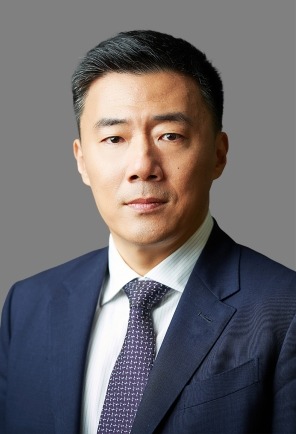安迈对谈实录 | 跨国企业中国战略重构:超越“去与留”的多元化选择
跨国企业在中国市场曾经的制胜之道现已难以为继。
五年前,凭借技术领先、产品优势和成熟管理体系,许多跨国企业能在中国市场轻松获利。如今,地缘政治格局重新洗牌,全球监管持续收紧,本土企业在核心领域强势崛起,使在华经营面临前所未有的复杂性与不确定性。外商对华直接投资自2021年达到3440亿美元峰值后急转直下,2024年净流出高达1680亿美元,创1990年有记录以来最高水平。[1]
跨国企业面临的抉择不再是简单的“留下”或“离开”,而是如何在新环境中重新定义自身价值与战略路径。
安迈中国团队近年来在为跨国企业提供中国战略分析积累了丰富经验。在去年发布的 A Guide to Resetting MNCs' China Strategy and Operations 报告中,分析了企业在“新常态”下面临的关键评估维度与可选策略。
近期,安迈咨询董事总经理兼北亚区联席主席杜威(James Dubow)与董事总经理贾缙进行了深度对谈,分享安迈团队在帮助跨国企业制定中国战略方面的实战经验与洞察。
跨国企业面临的三大挑战
杜威:今天我们要讨论跨国公司在中国面临的最大挑战之一 —— 他们对未来的思考和决策,包括如何发展业务,甚至考虑是否退出中国市场。很高兴邀请到贾缙,他一年前加入安迈并领导数字化业务,同时也帮助多家跨国公司做出关于其在华未来的决策。
贾缙,你观察到近年跨国公司在中国面临的关键挑战是什么?
贾缙:从趋势来看,五年前和现在,跨国企业考虑的问题完全不一样。五年前,基本上所有跨国企业都认为中国是一个巨大的市场,都在拼命地开展业务。但现在他们面临的不是如何发展业务,而是如何应对挑战。
这些挑战来自多个方面:首先是地缘政治因素,比如中美关系以及关税的不确定性;其次是法律监管的加强,美国和中国都在数据安全等方面大幅加强监管;第三个是中国本土企业的崛起,特别是在新能源车、消费电子等领域发展非常迅猛。以前跨国企业在中国相对领先,比较容易赚钱,但现在确实困难多了。
杜威:当跨国企业来找安迈团队咨询时,你是否感觉到它们对自己想要做什么有清晰的想法,只是需要帮助确保高效执行,还是说它们对自己的选择和路径感到困惑?
贾缙:这确实是一个变化。几年前跨国企业来找咨询公司合作,更多是希望我们提供建议,让他们更好地深耕中国市场。但现在的重点更多在于如何应对挑战,以及在当前不确定的环境中作出有效决策。
我们通常会建议他们从三个维度思考:
- 第一:认清楚具体面临的挑战是什么 —— 是地缘政治、监管加强,还是关税不确定性?
- 第二:认真考虑中国在其整个全球布局中的地位。以前跨国公司因为技术先进,来到中国就能赚钱。现在在领先优势不明显的情况下,中国业务对他们来说到底意味着什么?
- 第三:如果要在中国继续发展,如何面对本土竞争对手的挑战?
基于这三个维度,跨国公司可能会有几个选择:放弃中国市场;扩展其他市场以分散风险;继续深耕投资,让在华业务“比中国更中国”等等。
案例:跨国软件服务公司分拆出售
杜威:我知道你目前正在参与这一领域的项目。你从这个项目中收获了什么心得,对我们如何思考这些问题有什么影响?
贾缙:我现在服务的是一家软件服务公司,这家跨国公司曾经非常有名,因为它倡导了非常先进的方法论,在IT界非常受尊重。最辉煌的时候,它在中国曾经有近3000名员工,有很多成功案例,其中包括帮助中国一家领先企业构建了研发体系。
但随着技术发展,他们倡导的先进方法论中国人都学会了,而且发挥得可能比他们更好。所以他们在中国的业务逐渐受阻,营业额和盈利能力都在下降。
我们为它做了整个中国业务发展战略分析,提出五个选项:第一,什么都不做,静观一两年再看;第二,业务和利润都下降了,干脆关掉中国业务;第三,寻找中国本土企业合资;第四,继续加大在中国的投入,做业务转型;第五,出售中国业务。
综合考虑它们的优劣势、竞争格局以及中国市场整体发展后,我们的建议是要么出售业务,要么加大投资做业务转型。
这家公司和股东经过内部讨论后更倾向出售,但考虑到中国仍是非常有吸引力的市场,管理层不愿完全离开中国,所以最终我们建议分拆出售 —— 把一部分业务出售给中国买家,同时保留利用中国人才优势服务海外客户的部分。这样既不完全撤出中国,又解决了本土竞争激烈导致的盈利下降问题。目前中国有一家非常知名的投资公司准备接手,我们正在帮助推进这个项目。
桥接总部与本地:第三方咨询的价值
杜威:对于任何跨国公司来说,这些都是很难做出的决策。特别是像你说的,这些公司往往在中国有很多员工、进行了大量投资。而许多管理层位于欧洲或美国,过去几年他们较少来中国,对这里发生的事情不那么熟悉。在这种情况下,你如何帮助总部管理层进行决策?
贾缙:我觉得这正是为什么这些公司需要像安迈这样的咨询公司服务的原因。由于过去几年疫情的影响以及其他原因,很多国外高管较少来中国,对中国的真实情况了解不够透彻。
而我们每天在市场上,与各种基金、企业有合作,所以对市场更了解,能给他们更多洞见。我们还能给出一些他们认为虽然有挑战但后来证实是正确的决定。安迈长期帮助很多外资企业在中国发展,完成过从开始到收尾各个阶段的项目,因此我们能提供非常有价值的意见。
杜威:在平衡本地管理团队与总部之间时是否存在挑战?有时我们处在不同决策中间,你如何处理这种情况?
贾缙:我们作为第三方,必须保持正确立场,不偏向任何一方。最终要看我们的建议能否真正符合企业发展战略。我们始终围绕这三个维度 —— 面临的挑战、中国在全球的位置以及如何竞争 —— 基于大家都认同的方法论和事实分析,我觉得双方的意见差异不会太大。
杜威:在加入安迈之前,你在其他咨询公司和私人公司拥有多年的职业经历。能谈谈你在不同地方有什么不同体会吗?
贾缙:我个人觉得很难定义安迈是一家什么公司。很多人说我们是咨询公司,但我觉得不止于此。传统的咨询是“我告诉你怎么做”,但在安迈更强调的是“我来做”,我们非常强调亲自去做,非常强调结果。
我们的临时管理服务(Interim Management Service)很重要 —— 在客户遇到巨大挑战时,我们会派出代理CEO、CFO直接把企业做起来,从财务角度看到业绩提升。虽然市场上也有代运营公司,但我们在管理层有很强优势,可以直接代替CFO、CEO。我们既有咨询能力、实施能力,又有落地能力,非常强调结果导向。
杜威:这是一个很好的例子,你如何看待安迈的产品服务差异,特别是在数字化转型方面?
贾缙:我觉得安迈的DNA更多是通过与基金合作帮助被投企业降本增效。我在安迈接触的客户紧迫性更强,不像传统咨询那样可以规划两三年做一个很大的转型项目。在我们现在接触的客户里,很少有人说“让我等你两三年”,很多是“半年我要结果,半年我要看到提升”。
以前我们做一份报告可能有80到100页,描述得非常详细,但在这里,因为我们的客户更多是基金客户或初创企业,他们期望在5页之内看到我们要做什么,我们的结果是什么,多长时间能拿到结果。服务客户的对象不同,作为乙方要给客户提供他们需要的东西,所以我们需要适应,需要看如何在这种情况下给客户提供他们最需要、最正确的解决方案。
“中国速度”:不可或缺的创新引擎
杜威:昨晚我们与一些在华跨国公司高管共进晚餐。我听到一些跨国公司本地管理团队认为,如果总部错过了学习和了解中国创新的机会,特别是在技术方面,还有制造业、医疗保健等其他领域,那么他们将在竞争中失去先机。留在中国市场了解正在发生的事情和学习也很重要。
贾缙:大家都能看到有挑战,但中国这个市场其实是不可或缺的。可能五年前大家更多从赚钱的角度说中国不可或缺,现在技术、人才、创新也是不可或缺的。
特别是“中国速度” —— 中国在新能源车、制造业、人工智能方面的发展速度和创新性目前看来是领先的。就像我们正在服务的这家企业,虽然决定出售部分中国业务,但还是看中中国市场的人才和创新性,所以还是要保留在中国市场的一部分。在其他行业也有许多类似的例子。所以中国市场对跨国企业来说,不是那么轻易说再见就再见的。
杜威:毫无疑问,中国市场正在发生变化和颠覆,挑战与机遇并存。很多中国以外的人都注意到了中国市场的快速发展,在你的观察中,中国经济增长的故事中,有哪些创新和令人兴奋的事情在发生?
贾缙:不管从教育重视程度、大学生毕业数量还是企业竞争状况来看,创新一直是推动中国企业发展的巨大动力。
当然欧美也有很多创新,但在中国,竞争更加激烈。我不认为这是“卷”,但如果不创新,企业很难生存,所以创新机制、创新能力、创新人才储备成为中国的一个很大优势。
虽然很多跨国公司把部分生产或供应链挪到海外,但它们还是很重视中国的研发市场。除了新能源车、人工智能,创新药等其他方面的创新也在发展。如果跨国企业能真正利用中国市场的创新,对其全球布局是非常有利的。
参考资料:
[1]. Bloomberg: China Has Record Foreign Investment Outflow as $168 Billion Exit https://www.bloomberg.com/news/articles/2025-02-14/china-has-record-foreign-investment-outflow-as-168-billion-exit
The following conversation has been edited for length and clarity.
James Dubow: Today we’re tackling one of the most challenging problems for MNCs in China – their future their future strategy. This means deciding how to grow and sometimes, whether to exit the market. We're joined by Jia Jin, who leads our digital practice and has been helping several MNCs navigate these strategic crossroads in China.
Jia Jin, what are the biggest challenges you’re seeing for MNCs in China?
Jia Jin: It’s completely different from five years ago. Back then, almost all MNCs saw China as a huge market, and they were desperate to expand their business there. But now, the focus is not on growth, but on navigating a new set of challenges.
These challenges fall into three areas. First, geopolitics: US-China tensions and tariff uncertainty create constant instability. Second, tighter regulation in both countries, especially on data security. Third, and most importantly, the rise of local rivals in critical sectors such as electric vehicles (EVs) and consumer electronics.
The edge that MNCs once had is disappearing, making success much harder to achieve today.
James Dubow: When MNCs approach us, do they have clear ideas about what they want to do, or are they confused about their options?
Jia Jin: That’s changed as well. A few years ago, MNC clients sought advice on how to deepen their presence in China. Now, they come to us for help with managing risk and uncertainty as the operating environment grows more complex.
We suggest they think through three dimensions:
- Identify the biggest challenge: Is it geopolitics, regulation, or local competition?
- Reassess China’s strategic value: What role should China play in your global footprint now?
- Define a new competitive edge: For companies that stay, how will they compete against local players?
Adapting to China's New Reality
James Dubow: I know you’re currently working on a project in this area. What learnings have you and the company gained from that experience?
Jia Jin: The project I’m on now faces almost the exact same challenges. We’re advising a global software services firm that was once a market leader, known for its cutting-edge methodology. At its peak, it had nearly 3,000 employees in China and many success stories, including helping a top Chinese tech company build its entire research and development (R&D) system.
But over time, Chinese competitors not only learned this methodology – they’re even applying it better. As a result, the MNC’s China business came under greater pressure, with both revenue and profitability in decline.
The management team came to us for help rethinking their China strategy. We did a full analysis and identified five main options:
- Do nothing and wait a year or two
- Shut down the China business
- Form a joint venture with a local partner
- Double down on investment to fund a turnaround
- Sell the business
After analyzing the firm's strengths against the competitive landscape and market trends, our recommendation was stark: either sell the business or double down on a major turnaround to bring performance back.
Ultimately, after discussions with their shareholders, they chose to sell. However, like many MNCs, the client didn’t want a complete exit, as China remains an attractive market. We therefore proposed a carve-out sale: split off the underperforming unit and sell it to a suitable local buyer, while retaining the part of the business that leverages China’s talent to serve global clients.
This way, they reduce their geopolitical exposure and address the margin pressure from intense local competition, while avoiding a full exit. A well-known Chinese investment firm is now preparing to take over, and we’re supporting the process.
James Dubow: These are difficult decisions for any company, especially those with substantial employees and investments in China. MNC executives are probably sitting in Europe or the U.S., and many have travelled less to China over the past few years and may be less familiar with the market. How do you help companies make these decisions, especially back at the home office?
Jia Jin: This is exactly where our value lies. Our on-the-ground presence and daily engagement with private equity funds and companies give us the real-time intelligence that overseas executives might lack. Having helped numerous MNCs through the entire lifecycle in China, from entry to exit, we can offer insights grounded in practical experience. This gives management the confidence to make difficult but necessary decisions.
Leveraging China's Innovation Ecosystem
James Dubow: Last night we had dinner with some MNC executives in China. Some local management teams believe that their global organizations would miss out if they don't learn from the innovation happening in China, specifically in technology, manufacturing, healthcare, and other areas. From that perspective, it would be important to be in this market to understand what’s happening and learn.
Jia Jin: Exactly. While we all see challenges, China remains indispensable – not just for revenue but for tech access, talent and innovation. This trend is reflected in what we call “China speed” – the incredible pace of development in EVs, manufacturing, and artificial intelligence (AI), where Chinese companies are leading the global market. Even our client, while selling part of its China business, is retaining some operations to leverage the country's innovation ecosystem and talent base. This isn't a market you can simply abandon.
James Dubow: On a personal note, you had a long career at another major consultancy before joining A&M. What have you learned from your different experiences?
Jia Jin: For me, it’s hard to define A&M as just a consulting firm. Traditional consulting often stops at telling you what to do. A&M’s ethos is about getting it done. We have a hands-on, results-oriented approach.
Our interim management practice is a great example. When a client is in crisis, we can step in as interim CEO or CFO to drive a turnaround and deliver tangible financial improvements. We have the capability not only to advise but to implement and execute.
James Dubow: How does that difference show up in your digital transformation work?
Jia Jin: A&M’s DNA is closely tied to the world of private equity, which means we are focused on driving value with urgency. Our clients don’t want a two-year roadmap in a 100-page deck; they expect to see five-page summaries outlining actions, outcomes and timelines.
We adapt to different client needs – agile, pragmatic, relentlessly focused on rapid, tangible improvements.
James Dubow: There's no question that Chinese market is experiencing significant change and disruption. What parts of the economy are you seeing that are unique and growing, with a lot of innovation and excitement happening?
Jia Jin: China's innovation drive is powered by a strong emphasis on education, a massive pool of university graduates, and fierce domestic competition. It’s a market where innovation is a prerequisite for survival, which has created a powerful ecosystem for new ideas and technologies.
Even as MNCs diversify their supply chains, many are keeping their R&D centers in China for this reason. We’re seeing it not just in EVs and AI, but increasingly in areas like innovative drugs. For any MNC, learning to effectively leverage this innovation is key to optimizing its global strategy.
Source:
[1]. Bloomberg: China Has Record Foreign Investment Outflow as $168 Billion Exit https://www.bloomberg.com/news/articles/2025-02-14/china-has-record-foreign-investment-outflow-as-168-billion-exit




